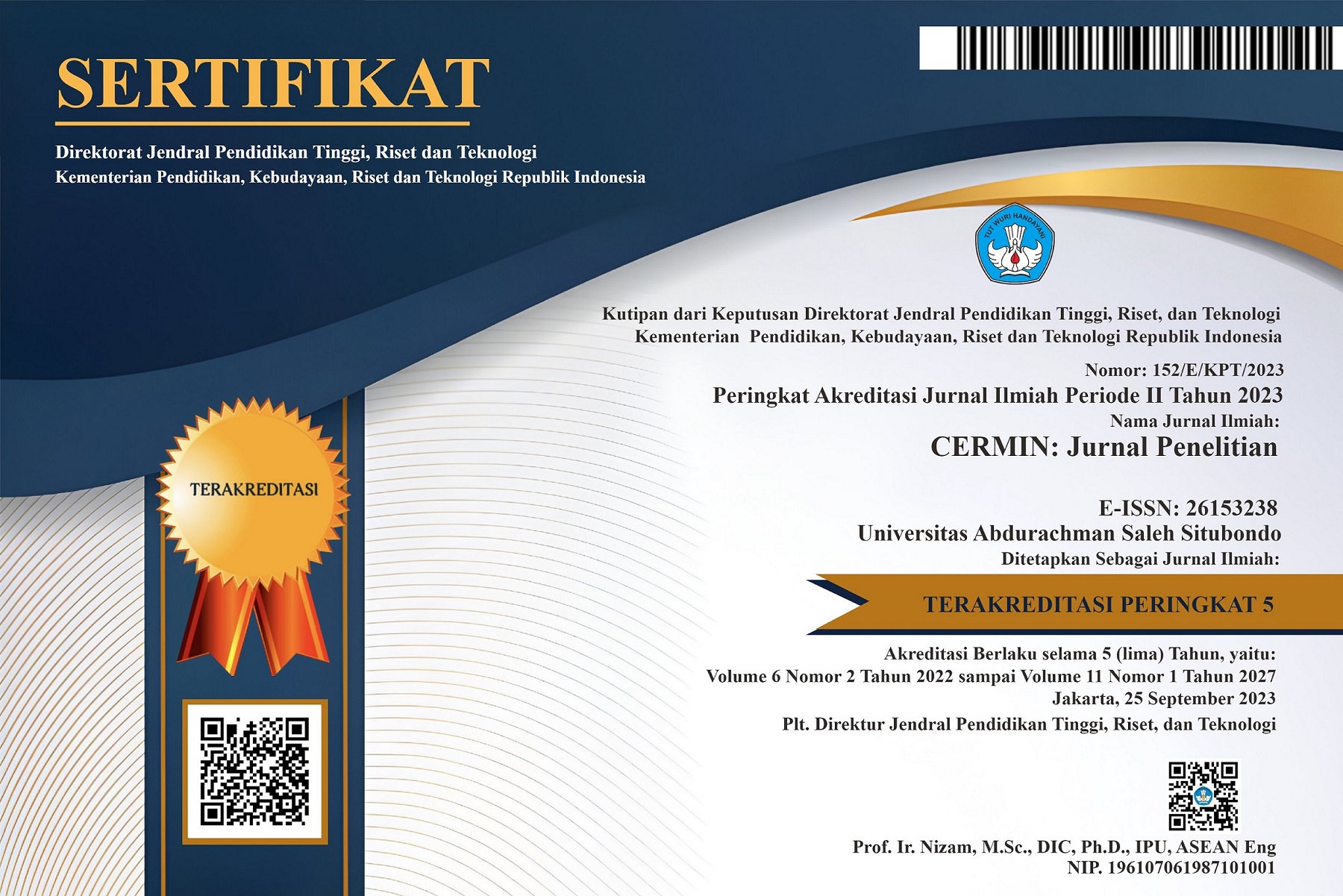MENGKOBINASIKAN GAMES DENGAN STRATEGI BUZZ GROUPS UNTUK MENINGKATKAN PEMAHAMAN MAHASISWA PADA KELAS GRAMMAR
Abstract
The final goal of this study is to know the effectiveness of learning methods that combine games with the Buzz Groups strategy to improve students' ability in Grammar classes at Faculty of letters at Abdurachman Saleh Situbondo University. Buzz Groups is a discussion group that discusses a topic and exchange ideas to solve a problem, where the same discussion method in each meeting will saturate students so that a combination of games is needed so the discussion is not boring. The combination of games and strategy was chosen because Grammar class is a subject that tends to be boring because the material is rather difficult for students, so it needs a way to keep them excited, happy and play an active role in learning activities. This study is a classroom action research that is made in one research cycle. The data in this study will be obtained during learning activities, where the existence of this research is expected to be able to assist teachers / lecturers in teaching English so that the methods used are more varied and the learning targets are expected to be achieved.
Downloads
Abstract
The final goal of this study is to know the effectiveness of learning methods that combine games with the Buzz Groups strategy to improve students' ability in Grammar classes at Faculty of letters at Abdurachman Saleh Situbondo University. Buzz Groups is a discussion group that discusses a topic and exchange ideas to solve a problem, where the same discussion method in each meeting will saturate students so that a combination of games is needed so the discussion is not boring. The combination of games and strategy was chosen because Grammar class is a subject that tends to be boring because the material is rather difficult for students, so it needs a way to keep them excited, happy and play an active role in learning activities. This study is a classroom action research that is made in one research cycle. The data in this study will be obtained during learning activities, where the existence of this research is expected to be able to assist teachers / lecturers in teaching English so that the methods used are more varied and the learning targets are expected to be achieved.
References
Dimyati dan Moedjiono. (1992). Strategi Belajar Mengajar.Depdikbud Dirjen Dikti: Proyek Pembinaan tenaga Kependidikan.
Djamarah, Syaiful Bahri&Azwan Zain. (2006). Strategi belajar mengajar. Jakarta: Rineka Cipta.
Harmer, J (2001). The Practice of English Languange Teaching Third Edition. England: Pearson Education Limited.
Hasibuan dan Moedjiono. (2004). Proses Belajar Mengajar. Bandung; PT Rosda Karya.
Hisyam dkk. (2008). Strategi pembelajaran Aktif. Yokyakarta: Pustaka Insani Madani.
McCallum, G. P. (1980). 101 Word Games: For students of English as second or foreign language. Oxford: Oxford University Press.
Rasyid, A&Nur H. (1997). Teaching English as a Foreign Language (TEFL) in Indonesia. Theory, Practice, and Research, Department of English Language.
Read, C. (2009). 500 Activities for the Primary Classroom. Thailand: MacMillan.
Soepono. 2000.Penelitian Tindakan kelas. Yogyakarta: CAPS
Supriadi. (2006). Penerapan Pembelajaran dengan metode Buzz Groups untuk Meningkatkan Motivasi Belajar Siswa. Skripsi. Jember: FKIP UNEJ
Suprijanto. (2007). Pendidikan Orang Dewasa. Jakarta: PT. Bumi Aksara
Surjadi. (1989). Membuat Siswa Aktif. Bandung: Bandar maju.
Pinandhita, Fitra. (2014). Implementing 3D Animation Film as a Device to Enhance Students’ Speaking Skill for 1A Grade Students of IKIP PGRI Madiun. The 61thTeflin. Proceeding.
Tarigan, Djago H.G.(1986). Teknik pengajaran keterampilan Berbahasa. Bandung: Penerbit Angkasa
Trianto. (2007). Model Pembelajaran Inovatif Berorientasi Kontruktivitif. Jakarta: prestasi Pustaka.
Wiriatmadja, Rochiati.(2005).Metode penelitian Tindakan kelas. Bandung: PT. Remaja Rosdakarya.











